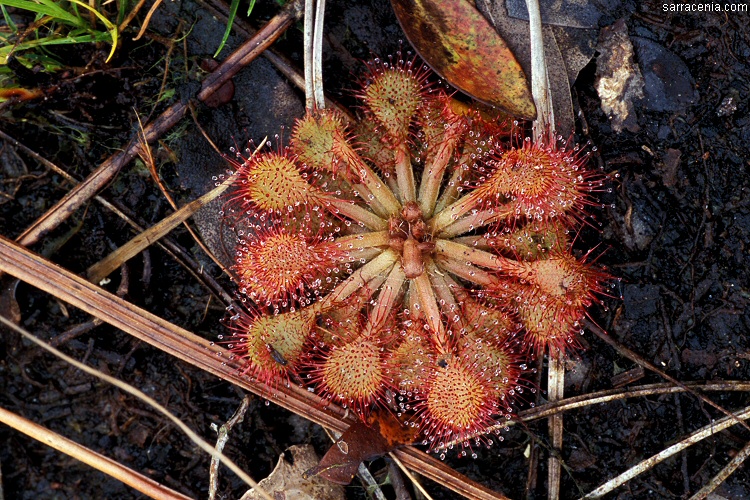
Roadside botany:
We were visiting friends, and between our orchestrated activities with them
we found we had a few hours to burn.
In this heavily populated Gulf Coast of Mississippi, carnivorous plants still thrive on the roadsides of the major highways.
Unfortunately, so do the realty signs and construction business. The everly diminishing wooded lots
are bulldozed and transformed into shops, car-washes, and fastfood joints. Even after the bulldozers finish their
terratransformations, carnivorous plants may persist among the landscaping shrubs and in the turf grasses. But even
these are wiped out by the first person to apply fertilizers or herbicides.
So while I clicked waypoints into my GPS as we explored, I knew I was only recording ghost sites that
were destined to be destroyed within a few years.
The highway passing through Ocean Springs is flanked by closely-mowed shoulders.
The land beyond the shoulders is either developed
property (and therefore, botanically useless), or wooded lots with many interesting plants.
Small carnivorous plants such as sundews persist in the mow strips,
and bigger plants like Sarracenia grow at the edges of the mow strip. Carnivorous plants cannot survive
beyond the mow strip because the woody vegetation is no longer burned. The owners of the land are not interested in
maintaining the land in any biologically valuable state--they are only keeping the lots fallow for a few
years until they can be sold for development.
Exploring the mowstrips was certainly not going to be a wilderness adventure for us;
cars and trucks were blustering by close and noisily. It was like botanizing next to a herd of migrating wildebeasts.
Still, there were plants and things worth seeing; fragments of ecosystems
desperately trying to find a place to survive.
Beth and I stopped at a site that looked promising. It had
Sarracenia alata flowers, a bit of open water, and a safe place to park the car well off
the road. Right away we found this nice little sundew growing at the edge of a
waterfilled rut. (It was, alas, near another realty sign.)
Short petioles, prostrate habit, round petioles--there's really no arguing the Drosera capillaris
identification. The stipules (a central, scale-like stipule with a multifid tip, and a pair of long, narrow
stipules flanking it) provided further verification of the ID.